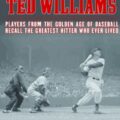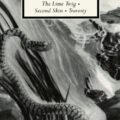Conversations: Patti Marxsen and Madison Smartt Bell

I met Madison Smartt Bell on the veranda of the Hotel Oloffson in Port-au-Prince in 1997 during a summer of communications work for Haiti’s Hôpital Albert Schweitzer. At the time, Madison was “in country” researching volume two of his masterful trilogy of the Haitian Revolution. The first volume, All Souls’ Rising (1995), had already been published to widespread acclaim that included the Anisfield-Wolf Book Award as well as nominations for the National Book Award and the PEN/Faulkner Award for Fiction.
Though often listed among Bell’s seventeen novels to date, the trilogy’s 2000-plus pages can be read as an extensive biographical study of Toussaint Louverture, as the titles of volumes two and three suggest: Master of the Crossroads (2000) and The Stone that the Builder Refused (2004). Madison Bell’s biographical works also include Toussaint Louverture: A Biography and Lavoisier in the Year One: The Birth of a New Science in an Age of Revolution (2005) about French chemist Antoine Lavoisier, who was guillotined in 1794. With the recent publication of Bell’s Child of Light, the first biography of fellow American novelist Robert Stone (1937 –2015), it was time for a conversation about the intersection of history and fiction in the enduring work of Robert Stone (1937-2015).
Patti Marxsen: Every biography is a journey for the author. Where and when did your journey with Robert Stone begin?
Madison Smartt Bell: I had read many of his books by the 1980s, beginning with my mother’s paperback copy of A Flag for Sunrise that I read on a flight to Rome in 1983 and the two previous novels at the time, Dog Soldiers and A Hall of Mirrors. The big crop of Vietnam novels hadn’t quite come in yet and a lot of people, including me, thought how curious it was that Dog Soldiers seemed to be the best Vietnam novel out there and even won the National Book Award for Fiction in 1975, although very little of it takes place in Vietnam. On the dark nights when I wondered why the hell I was spending my life writing fiction, I would read something by Stone or something by William Vollmann to reassure myself. Then, a little after Outerbridge Reach came out in 1992 and won the Ambassador Book Award for Fiction, Stone came to teach at the Writing Seminars of Johns Hopkin University, where my wife and I were teaching. That’s when we got to know Bob and his wonderful wife Janice.
PM: What did you have in common?
MSB: Well, my intro to the bio says that we shared “an addictive personality and a vocation for letters.” I have this facility where I can get a very good result without suffering, and I’ve tended to figure that was good enough. Bob also had such a facility I think, but he would go past that into the terrain of suffering and stay there until the coal started turning into diamonds. He’d have written more if not for procrastination and his genius for devising epic distractions. But when he got himself into the fiery furnace, he would labor there until the work came out perfectly tempered.
PM: Most biographies open with a genealogy of ancestry and origins. Child of Light is different in that it plunges right into what you describe as Stone’s “hardscrabble childhood” in NYC as a fatherless kid dependent on a loving-but-poor and mentally ill mother. It’s often Robert Stone’s voice that speaks to the reader. How and why did you decide on this approach?
MSB: Stone’s ancestry and genealogy are more or less untraceable, since nobody really knows who his father was and his mother swept away many of her own tracks. And I don’t know if I made any conscious decision, but anytime I could quote Bob, I was inclined to do it. His voice could be considered to be the subject of the book.
PM: Despite his harsh beginnings, it’s interesting how tolerant he could be of painful experiences. After all, he was slapped with a razor strop on a regular basis by the Marist brothers who ran St. Ann’s School/Orphanage in New York … and when he was living with his mother, the accommodations were cheap, single-rooms with a bathroom down the hall. How did he manage to navigate the loneliness of his impoverished world?
MSB: People who suffer helplessly learn to tolerate it because they have no choice. I’d say that Bob’s small boyhood boarding at St. Ann’s is an example of that situation. He was still angry about it decades later, but there were some benefits too, particularly when he was older and not living in the institution. Although he complained that the Marists were execrable teachers, he read a good deal of Latin classics there and had what he called his first literary experience reading Carlyle’s history of the French Revolution. I think St. Ann’s gave him the tools of the self-education he accomplished, through his voracious reading, after he had to drop out of college. It also, for better or worse, branded him with Catholicism—his whole life and work are in tension with that.
With an eccentric childhood, to say the least, Bob as an adult was “in but not of” a great many situations. He was a close, lifelong friend of Ken Kesey (author of One Flew Over the Cuckoo’s Nest), but never really bought into the Merry Prankster cult. On the mundane end of the spectrum, he spent much of his life as a college professor, though he had only one year of college himself. That status of an outsider with a privileged view and access to the “inside” gave him an unusual perspective for his fiction.
PM: But even before that period in California as a Wallace Stegner Fellow, he joined the U.S. Navy in 1956. That decision, as you explain in some detail, was a turning point on Stone’s path to becoming a writer. His wonderful comment about his stopover in Havana captures the value of it all: “I have used the film of its memory ever since in turning real cities into imaginary ones.” You also write that his early story “The Good Neighbor,” built around the exploits of a sailor coming ashore in the tropics, “suffuses its exotic locale with the sort of dark ambivalence that would characterize Robert Stone’s later work.” What was the source of that “dark ambivalence” – the moral ambiguity of Stone’s characters or the social and political chaos Stone was drawn to and, effectively, able to navigate?
MSB: His turf was the gray zone where the American Dream drifts toward nightmare. “Nothing is free,” was a mantra of his. The post-WWII promise of boundless prosperity turns out to be a false one. Pursuit of happiness becomes the pursuit of “life more abundant,” a phrase Stone presents in several novels as a dangerous delusional lure. The machinery of democracy can be manipulated by demagogues (Matthew Bingamon in A Hall of Mirrors now feels like a cross between Rupert Murdoch and Donald Trump). The flower children of the 1960s become prey of Morlocks who emerge from their caverns by night. In your tour of tropical paradise, you may find a man-eating shark at the bottom of the blue lagoon. What interested Stone as a writer was the tension between merry illusion and its dark antithesis.
PM: In the 1974 New York Times review of Dog Soldiers, Richard Locke wrote that “Stone’s characters are always losers: men troubled and angry and conscience-poor, not simply macho, and women who are certainly more real and important to him (as are children) than they are for most young male writers today—although in both novels the women are even more extravagantly regressive than the men.” Would you agree with that?
MSB: I’m not sure what “regressive” is supposed to mean in this context, except that New Yorkers were still worshipping Freud in 1974. Otherwise it’s a fair description of Bob’s second novel. I might describe Converse and Hicks as more lost people than absolute losers. Of the three significant women characters, Charmian is a chimerical anima projection for Converse, Converse’s mother a nice cameo appearance by Bob’s mother, and Marge very much a creature of her burgeoning narcotics addiction, a subject that did interest Bob quite a bit. These limitations don’t carry forward into the later work at all though. Later novels have far more rich and complex characterization of women (e.g. Justin in A Flag for Sunrise, Anne Browne in Outerbridge Reach, Kristin in Bay of Souls.)
The men in the later novels aren’t losers in the sense that Converse and Hicks might be called that—most of them are materially successful in fact, although they do have psychological weaknesses, which is what makes them interesting.
PM: These characters drive intricate plots, but also humanize Stone’s larger-than-life stories about complex historical and political events. I see some common ground there when I think of your work on the Haitian Revolution, even though that conflict is over two centuries old.
MSB: My work, as a whole, is less exclusively concerned with the contemporary American experience than Bob’s, but there is considerable overlap. Mainly, I’d say we shared some insights about the way the world is. I was a few years into my Haitian adventure when Damascus Gate—which focuses on the Israeli-Palestinian conflict—came out in 1998. Bob has a line in there about the mystical patience of the very poor. Well, I had seen plenty of that in Haiti and Bob’s take on the rank and file people of Palestine made me want to take him to Haiti. We went almost on the spur of the moment in the winter of 1999, then made a second trip together in June 2000, by which time Bob was working on the Caribbean parts of his seventh novel Bay of Souls (2003). It was in Haiti that we became close friends and remained so for the last 15 years of his life.
PM: Were you thinking of writing his biography during those years?
MSB: Not at all. After my New Yorker online piece was published after Bob’s death in January 2015, his agent wrote me a nice note about it with the line, “We need to find a biographer.” I remembered it later and asked my own agent if she thought that was a hint, which she did. I had a short-term teaching thing in Key West that March, partly because I wanted to go down and see Bob and Janice. Bob was gone by then, but it was during that trip that Janice and I figured out that we could work together. In the end, the book proposal I worked on throughout the summer of 2015 was snapped up by Gerald Howard at Doubleday as he was also a Stone fan.
PM: How was this different from your previous biographical projects?
MSB: The two biographies I’d written before were about people safely dead for two centuries. Besides, I already knew a lot about Toussaint when I started that one and the Lavoisier book was for a series with parameters that required it to be fairly short. Somebody who died yesterday presented a different kind of problem. The nature of the research was going to be very different and involve primary archival research as well as interviews with dozens of people. It was very open-ended and hard to predict. Also, a lot of Stone’s papers were in a special collection of the New York Public Library, so that would take time, and a lot more of his papers destined for NYPL were still in Janice’s hands. She delayed the sale so I could work on that batch in their New York apartment, which was one of a hundred things she did without which there would be no biography at all.
PM: You dedicate this book to Janice, Robert Stone’s wife of over fifty years who, when they met at NYU in 1958, “aspired to the bohemian life,” as she put it. They certainly had that, but your biography suggests that Janice Stone was critical to Robert Stone’s success in many ways. Do you have a sense of how she understood her role as the wife of a famous novelist?
MSB: While they were at John Hopkins University, I heard her describe herself as a handmaid to genius. The remark was sardonic but also sincere. I think Bob’s life and work became her vocation, and though she was sometimes exhausted and exasperated by that, she was also fundamentally happy with it. And despite … quite a lot, they did have a deeply loving union. Two against the world, as he liked to say.
PM: What is the lasting achievement of Robert Stone?
MSB: All the novels through Damascus Gate are just diamond-hard. I can read any of them half a dozen times and still discover and learn new things. There’s very little in contemporary fiction that meets that standard.
PM: Conversely, what did he fail to accomplish that he set out to do?
MSB: In the writing of his last two novels his addictions (to alcohol in early days and to prescription narcotics later on) were beginning to outpace his vocation … although he did struggle mightily during this period, going into rehab several times and coming out temporarily stronger. He’d almost died writing Bay of Souls, which is probably his weakest novel (though a weak novel by Robert Stone is better than the best most other writers can do). Death of the Black-Haired Girl (2013) represents a recovery of his artistic strength, but by then his health was in a nose dive and he never really got started on his last book under contract—which was to have been a childhood memoir.
PM: Even so…
MSB: He is one of the very few of my contemporaries whose work I think is better than mine. I admire the richly realistic texture of his writing and the way he can bring the minds of his characters into such sharp and complete relief. There’s nobody better at that kind of psychological realism and very few as good.
PM: The literary “space” we tend to associate with Robert Stone is one of moral ambiguity and political turmoil. Dog Soldiers is set in the era of the American War in Viet Nam and A Flag for Sunrise unfolds in Nicaragua. Both are site-specific novels that might qualify as “historical fiction.” Nevertheless, I also sense some relevance to our own era. Would you agree with that and, if so, what makes him relevant today?
MSB: Well, Bob’s books weren’t historical fiction when they were written, and they weren’t just ripped from the headlines either. Bob struggled horribly trying to decide whether or not to go to Vietnam, but finally did and even after that he wanted to have his boots on whatever ground he was going to write about. He wanted to see a situation nan je li (with his own eyes) as we say in Haiti, and he had a compulsion to make each of his novels express the gestalt of being an American in the world at the time of the writing. I’d say he succeeded very well in doing that in his masterpiece novels through Damascus Gate. So those books become part of the historical record (e.g., if you want to know what American life was like in the 1980s, Children of Light will tell you), but they were very much part of the now of the time they were written. Most importantly, his novels show us how we got where we are, from the Civil Rights struggle through the Vietnam war, all the way to September 11, 2001, which is predicted in a general way by Damascus Gate. And all that work is colored by the suspicion that our eighteenth-century institutions might fail us, along with our moral fiber, as they have now done. Stone’s work in aggregate is predictive of the state of cultural decadence and political degeneracy into which we have collapsed. It’s a chronicle, somewhat like Gibbon’s chronicle of the decline of ancient Rome, only ours has happened a lot faster.
Patti Marxsen’s writings have appeared in Asymptote, the French Review, the Journal of Haitian Studies, and the Women’s Review of Books, among others. Her biographies include Helene Schweitzer: A Life of Her Own and Jacques Roumain: A Life of Resistance, which won the 2019 Haitian Studies Association Book Prize.




